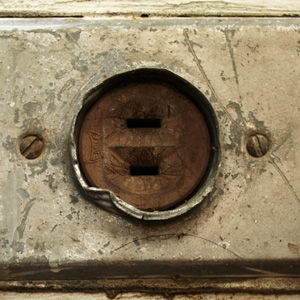Children are wonderful blessings that bring joy and laughter in every household. From infancy until the time they start crawling and learning how to walk, they are a remarkable sight, filling every moment with picture-perfect memories. Until your exquisite vase—a precious souvenir from your trip to Paris—breaks into a thousand little pieces after your child accidentally hit it.
That is the happy scenario. The worst is that your child chances upon an earring or loose change left on a counter top and pops this in his mouth. Or, sustains an ugly gash after tripping over the Persian rug in the living room and hits his head on the corner of the center table. Then you’d probably have to make a trip to the emergency room of the nearest hospital and part with a few thousand pesos. If you, and your child, are lucky, that is.
In developed countries around the world, accidents—most of which can be easily prevented—are the leading cause of death among children. Majority of these accidents happen in and around the home, and many are caused by overlooking certain precautions that are necessary for households with children.
Need for Child-proofing
Child-proofing is not baby-proofing, since babies are relatively easily secured from accidents around the home. Making your home child-proof entails constantly looking for ways to keep the environment safe as they grow and gain the capacity to get into new things that may cause them harm.
The rule of thumb is to child-proof your home before your infant becomes mobile, which is around six months of age. At this time, natural growth and development dictate an exploring nature. To begin child-proofing your home, you should really look around your home through the eyes of a child—get down to the floor, on your hands and knees, and take note of what is within reach: are there cords hanging down, or open electrical outlets that can be touched?
Child’s Room Must-haves
Here are some practical tips to prevent accidents from happening to infants, toddlers, or small children around the home:
When buying a wooden crib, make sure that the slats are less than three inches apart, as larger distances pose a strangulation hazard for small bodies that can slide through, allowing the larger head to lodge between slats and cause harm. Check for splinters or cracks, and no slats should be missing. The crib should have no sharp edges or loose, sharp screws that can scratch a baby. Tall corner posts also pose a strangulation hazard, since the baby’s clothing can catch the post and cause injury. These posts should then be no more than 1/16 inches high.
The crib mattress must fit snugly. No more than two fingers should fit between the crib and the mattress. Sheets should be for cribs only and fit all corners perfectly. Never use adult sheets in a crib. Loose sheets allow a baby to tangle up, again posing a potential hazard. If possible, use fire-retardant sleepwear.
Avoid placing the crib and low-standing furniture like chairs, tables or toy boxes in front of windows. Install window guards on all windows, except for the fire escape window. If possible, purchase cordless window coverings as window covering cords often have loops that pose a strangulation hazard. If you have a window covering that has cords, be sure that the cords are locked down or cut at loop end.
Remember that children love to explore. Often drawers and shelves are used for climbing, putting them at risk of sustaining crash injuries if the furniture tips over. Anchor all large furniture to the walls when possible. Loading the bulkier, heavier items in the lower drawers will also help stabilize a dresser.
As all children go through what is known as mouthing behavior, the nursery floor—and the entire house, in fact—should be free of small toys or items, including coins or pieces of jewelry which children can easily pick up, put in their mouths, and choke on.
Kitchen Maintenance
Move all cleaning products, medicines, or potentially poisonous products to higher cabinet levels, and install safety latches or locks to keep young hands out of these storage compartments.
Safety covers should also be installed for stoves with front controls. When cooking, use the back burners and turn all pot/pan handles toward the back of the stove. Never leave cooking food unattended.
Small appliances should be kept away from sinks and counter top edges. Store appliance cords, glassware, and knives out of reach of children.
Never carry hot food or liquids near your child, and keep these foodstuffs away from table or counter tops where small and unsteady hands can reach and topple them over.
Bathroom Reminders
Install safety latches or locks on all cabinet doors and drawers where poisonous substances like cleaners and detergents are kept. The same goes for the medicine cabinet, where additionally, all medicine should be in child-proof containers. While securing these substances this way is a good idea, it is better to keep these things in high cabinets and well out of reach, since kids sometimes have a way of figuring out how these locks or latches work. All razors, blow dryers, scissors, and cosmetics need to be kept out of reach of children.
Install rubber strips or use a mat in the bathtub to prevent slips and falls. Aside from the danger of getting a nasty bump on the head, children can drown in as little as one inch of water. It is therefore definitely good advice to never leave a child around a tub, sink, or bucket full of water unattended. Dump all water after use and turn buckets upside down after you are through with them. You should definitely not leave a child alone in a bathtub.
Safety-lock the toilet seat at all times. Children carry most of their weight in the upper half of their body, and this weight distribution can cause a balance disturbance when leaning over an open toilet bowl.
If you have one in the house, water heaters should be set at 120 degrees Fahrenheit or lower. A child can sustain a third degree burn from water at 140 degrees Fahrenheit in just a three-second exposure. Always check bath water for hot spots by running your hand throughout the tub water.
Living / Family Room Ruide
Toddlers tumble. Their newfound independence and endless scooting, crawling, and walking put them at risk of sustaining head and other bodily injuries. Apply corner guards and edge cushions to help prevent injury if and when they do trip and hit a piece of furniture.
TV stands or entertainment centers should be secured to the wall to prevent them from getting knocked over in the course of play. Lamps, cords, and breakable decorative pieces like picture frames, clocks or statues should be moved away from edges of table tops and out of a child’s reach. Put these items away safely in another room with a baby gate to prevent children from going in.
House Monitoring
Lock doors that lead to stairways or use safety covers on the door knob. Use a safety gate for staircases, both at the top and bottom of the stairs. Safety gates can also be used in doorways to block off rooms—which should remain locked at all times in the first place—your child should not go in.
Monitor your child’s development, and if absolutely necessary, allow stair climbing only once walking is steady and the child has mastered the task. If possible, protective netting should be installed along stairways or deck rails.
Rugs can pose a problem for adults and children alike, so be sure to use non-skid backing or skid pads or safety tape to help keep them in place.
Test paint for lead content. Serious health risks, including brain damage and poisoning, can occur when toxic paint chips and paint dust are inhaled or ingested. Lead-based paint must be completely removed or covered with approved sealant.
 Cover any unused plug outlets with plug guards. All outlets must have a plate cover on them. Cover any electrical/extension cord with electrical tape or cord covers as well. Exposed extension wires can trip up a child or an adult, so use them sparingly where your toddler or child—or any human for that matter—is likely to crawl or walk by.
Cover any unused plug outlets with plug guards. All outlets must have a plate cover on them. Cover any electrical/extension cord with electrical tape or cord covers as well. Exposed extension wires can trip up a child or an adult, so use them sparingly where your toddler or child—or any human for that matter—is likely to crawl or walk by.
Be mindful of fire hazards around the home. Look for frayed or exposed electrical wires. Keep flammable materials away from heat sources and if possible, install and maintain fire alarms and carbon monoxide detectors throughout your home.
If you must have firearms in your home, make sure these are locked and unloaded, with ammunition stored separately. Needles to say, guns and ammunition should be kept safely—far and away from the reach of children.
The pool area should be fenced off with self-closing and self-latching gate.
Toxic plants should be in a room where children cannot enter. Better still, stick to non-toxic plants. The same holds true for pets, particularly dogs, as small children are advised to keep their distance from certain breeds like Rottweilers, pit bulls, or German shepherds. House such pets in another part of the home where the children have no access.
All alcoholic beverages should be kept out of sight and reach of children.
While we cannot immediately—or necessarily—child-proof each and every part of our home, it is important to lock rooms that have not been checked and made childproof. In these cases, we should let kids —visiting or your own—know if any room is off-limits, and these rooms should be kept lock at all times.
All these tips seem practicable and easy, but the simplest way to ensure the safety of your child at home is really the exercise of parental supervision. In any and all instances, vigilance is the key to an accident-free home. At the end of the day, however, it always helps to have a list of emergency phone numbers handy. •






